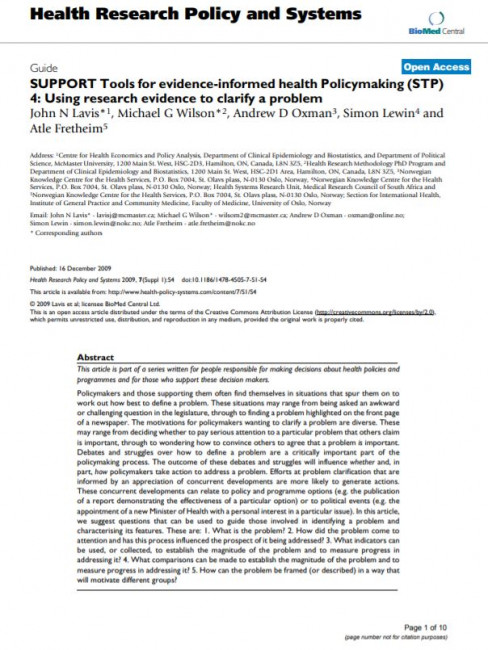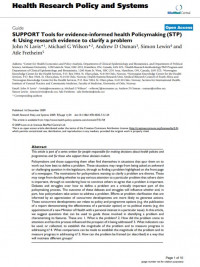This article is part of a series written for people responsible for making decisions about health policies and programmes and for those who support these decision makers.
Policymakers and those supporting them often find themselves in situations that spur them on to work out how best to define a problem. These situations may range from being asked an awkward or challenging question in the legislature, through to finding a problem highlighted on the front page of a newspaper. The motivations for policymakers wanting to clarify a problem are diverse. These may range from deciding whether to pay serious attention to a particular problem that others claim is important, through to wondering how to convince others to agree that a problem is important.
In this article, questions that can be used to guide those involved in identifying a problem and characterising its features are suggested. These are: 1. What is the problem? 2. How did the problem come to attention and has this process influenced the prospect of it being addressed? 3. What indicators can be used, or collected, to establish the magnitude of the problem and to measure progress in addressing it? 4. What comparisons can be made to establish the magnitude of the problem and to measure progress in addressing it? 5. How can the problem be framed (or described) in a way that will motivate different groups?



